My dear readers. You’ve listened to me rant and rave about maximizing the value of your Aeroplan miles using stopovers, crazy routings, and long layovers. Well, it’s about time that I practice what I preach.
Recently I’ve been planning an extremely complex Aeroplan booking for a trip that I’m taking next year. And now that it’s fully booked, I thought it’d be instructive to share with you the details (even though the trip is many months away) in order to walk you through my workflow when it comes to putting together a byzantine itinerary like this.
Given the upcoming separation from Air Canada in 2020 and the uncertainty of the program after that, I figured that the clock was ticking if I wanted to take advantage of some of the crazy things that Aeroplan lets you do. So while the main purpose of the trip is to go back to Beijing to visit my family for Chinese New Year 2019, I wanted to simultaneously use this opportunity to “take Aeroplan for a ride”. My goals were, roughly speaking, as follows:
-
Have a one-week stopover in Beijing for Chinese New Year
-
Fly around the world a lot, ideally in business class
-
Visit some out-of-the-way places that are allowed by Aeroplan’s generous routing rules; the more out-of-the-way, the better
Initial Considerations
If you’re familiar with how Aeroplan’s maximum permitted mileage (MPM) rules work, you’ll know that the farther the distance between your origin and destination, the higher your MPM, and therefore the more flying you’re allowed to do. Since one of the goals of this trip was to maximize distance flown, it was natural that I needed to set my destination as far away from my origin, Toronto, as possible.
It turns out that Perth, Australia is the closest airport to being at the exact opposite side of Earth from Toronto, and so my destination was chosen. That also means that I’ll be shelling out 160,000 Aeroplan miles for this business class redemption.
Using the trick to find the MPM online, I work out the MPM between Toronto and Perth to be 18,057 miles. Remember, you get three stops of over 24 hours in total, so with Perth and Beijing forming the bones of the trip, I’m left with one last stopover I can use somewhere else; where exactly will depend on the places I want to visit using my 18,057 miles of flying “room”. It was time to start doing some nitty-gritty route research.
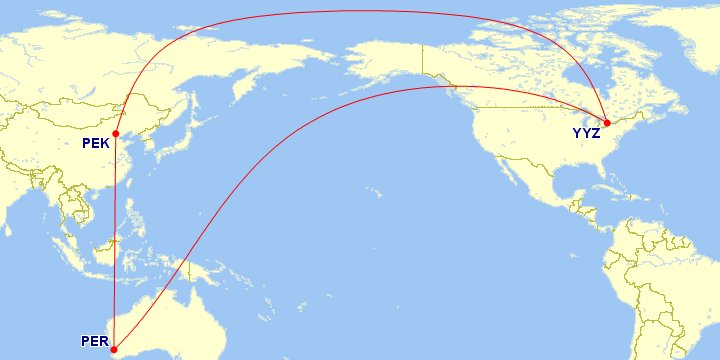
The African Hopper
Last year, I wrote an article called Oddball Trips with Aeroplan, and one of the possibilities I had discovered was the criss-crossing network of African flights operated by, among others, Ethiopian Airlines, South African Airways, Turkish Airlines, and Brussels Airlines, throughout the continent. I dubbed this the “African Hopper”, and on this trip I wanted to explore the possibility of making it a reality.
After I wrote about my favourite tools and tricks for planning an Aeroplan Mini-RTW, reader Martin reached out to me to let me know of another tool that’s super useful for this kind of task: the Star Alliance FlightMap. Every city that’s served by a Star Alliance airline is on there, and you can click from one city to the next to string routes together.
I zeroed in on West Africa, where I intended to have a few layovers and potentially a stopover on my way from Toronto to Perth. There’s a pretty interesting web of Star Alliance routes in this part of the world, as seen in the below screenshots from the FlightMap:
I use the Google Search method to determine the flight schedules of the flights linking Dakar, Conakry, Abidjan, Bamako, and Ouagadougou, as well as the onward flights to Istanbul and Addis Ababa. Eventually, I settle upon a Dakar–Conakry–Abidjan sequence, which gives me decent long layovers in the capitals of Senegal and Côte d’Ivoire and allows me to use my stopover in the capital of Guinea.
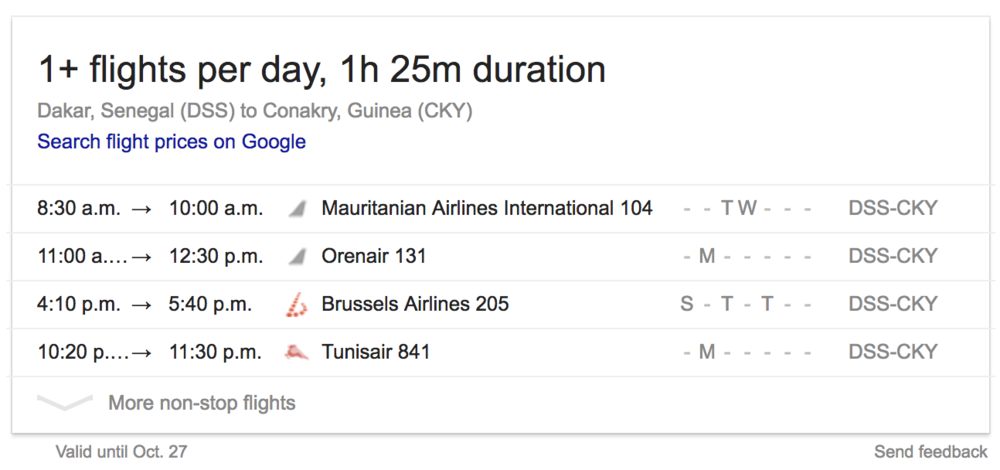
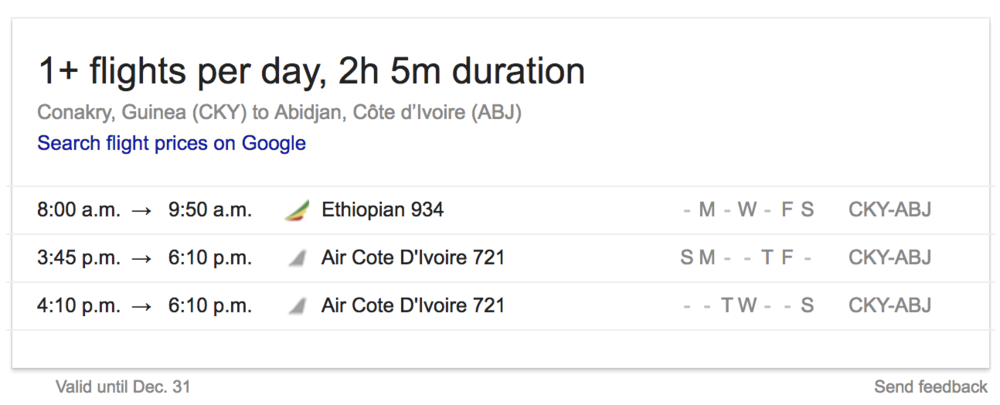
I could’ve gone with Dakar–Bamako or Dakar–Conakry–Ouagadougou, but the scheduling wouldn’t have been optimal – in both cases, one of the stops would’ve been a very short affair of only a few hours, which isn’t quite as much fun as a long layover.
To get to Dakar, I intend to fly South African Airways from Washington, DC. Meanwhile, I’ll be catching the Turkish Airlines flight out of Abidjan and into Istanbul. As you can imagine, not many people are redeeming their miles on flights in this part of the world, so availability was excellent. I was therefore satisfied with this portion of the trip, which looks as follows:
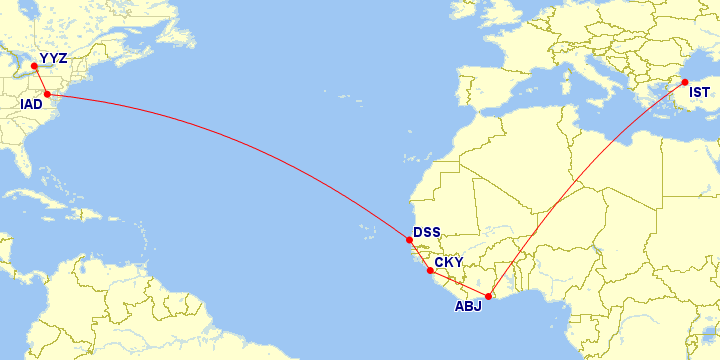
Air Canada // YYZ–IAD // Business South African // IAD-DSS // Business // 13 hr layover in Dakar Brussels // DSS–CKY // Business // 3 day stopover in Conakry Ethiopian // CKY–ABJ // Business // 12 hr layover in Abidjan Turkish // ACC–IST // Business
The United Island Hopper
Let’s be real. There was only ever one way to truly attain Goal #3 above – the goal of using Aeroplan to visit hard-to-reach places – and that’s the United Island Hopper.
Operated three times a week, United Airlines Flights 154 and 155 hop through seven islands in the Pacific Ocean over the course of 20 hours, providing these islands with a crucial link to the outside world. For anyone who likes aviation and flying, the United Island Hopper is a major bucket list item.
Starting in Honolulu, the westbound Flight 154 makes stops in Majuro and Kwajalein Atoll (both part of the Marshall Islands), followed by the islands of Kosrae, Pohnpei, and Chuuk (all part of the Federated States of Micronesia), before arriving in the US territory of Guam. Meanwhile, the eastbound Flight 155 traces the reverse path, and I was aiming to make it part of my return journey home from Beijing.

The problem with booking the Island Hopper as a through-trip, though, is that you don’t actually get to spend any time on the islands. Flights 154 and 155 stop in each of the islands for between 30 and 60 minutes, which is barely enough time to get off the plane to stretch your legs.
To my delight, though, as I was doing a cursory Google Search of the flight schedules…
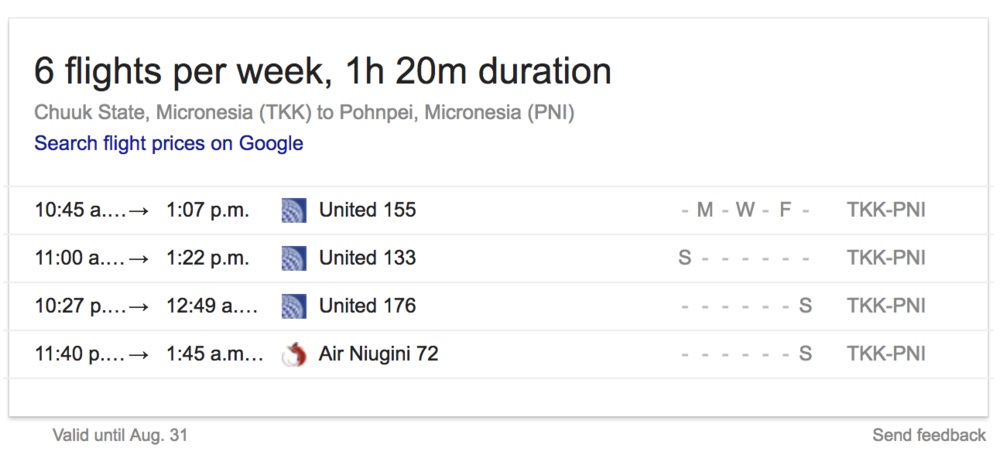
…I found that United operates even more frequencies across these islands that I wasn’t initially aware of! Indeed, as you can see, while Flights 154 and 155 operate on Mondays, Wednesdays, and Fridays, there’s another Island Hopper service, Flights 132 and 133, that operate on Sundays and skips over Kwajalein Atoll.
What’s more, there’s a third set of flights – Flights 176 and 177 – that operate solely between Guam, Chuuk, and Pohnpei. And by mixing and matching among the eastbound flights in each pairing, I was able to construct an itinerary that gave me a 14-hour layover in Chuuk and a near-perfect 23.5-hour layover in Pohnpei. Boom!
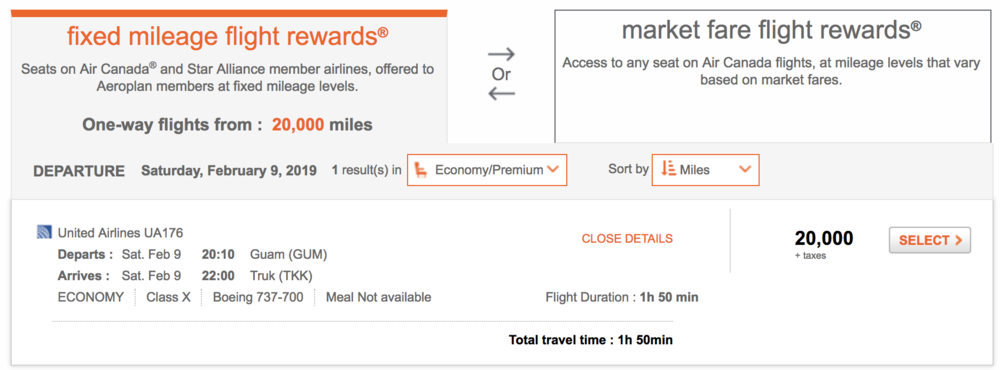
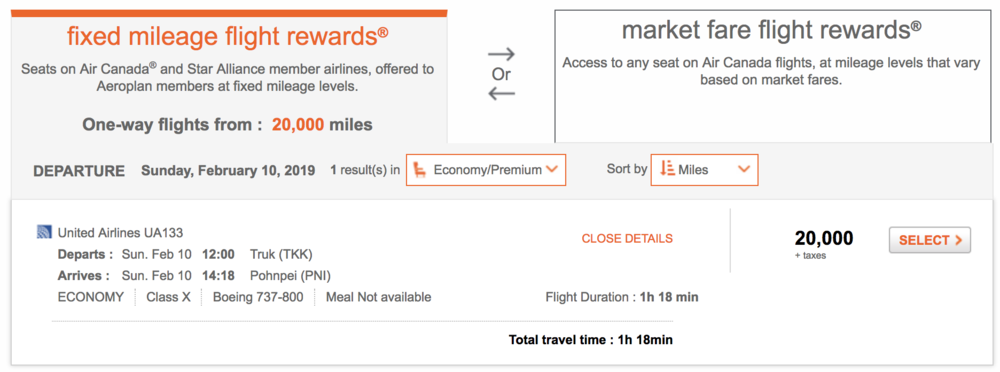
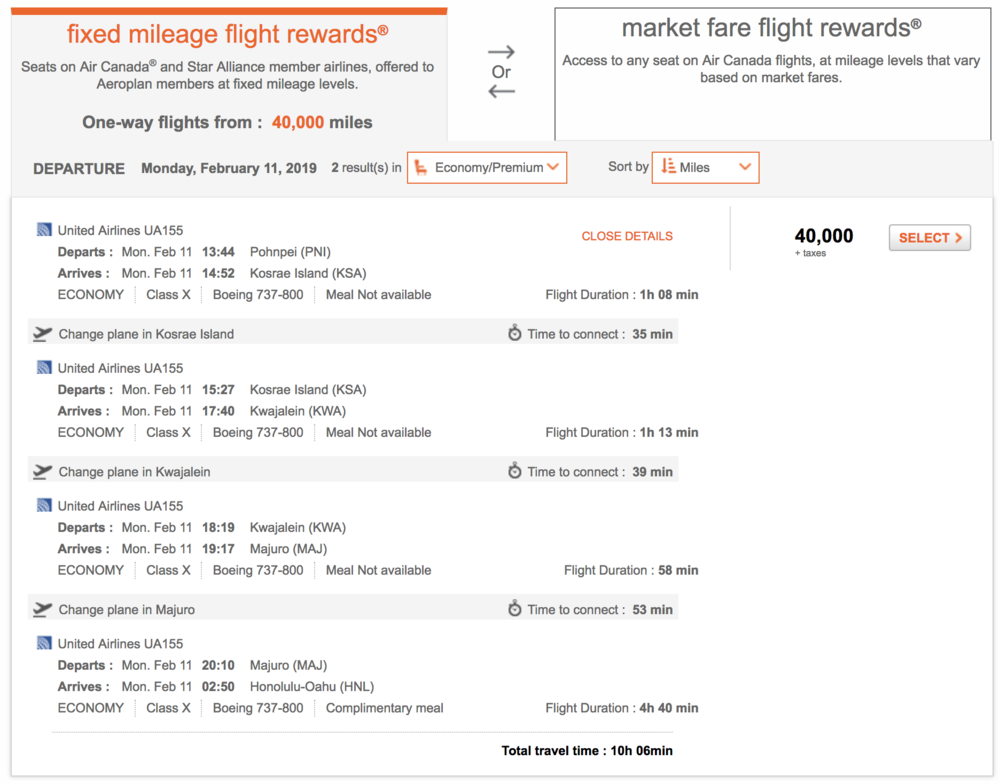
United doesn’t seem to release any business class award space on these flights, at least not until a few weeks out. That’s alright, though, because I’m totally happy to satisfy my obsession with remote islands in economy class!
The Final Pieces
With a few exciting excursions fixed in place, I now set about to finish off the route planning. I needed to get from Istanbul, the tail end of my African Hopper journey, to Perth, my point of turnaround. Using the Aeroplan search engine, I easily found availability on a mix of Turkish Airlines’s fantastic business class and Singapore Airlines’s new Boeing 787-10 business class, which I’m excited to try out.
Then, I needed to take care of the real objective of this trip – Beijing. That was also simple enough: Perth to Beijing via Singapore came up easily via an Aeroplan search, while Beijing to Guam – the starting point of the United Island Hopper – would be accomplished via a connection in Hong Kong.
It was at this point that I noticed I could actually extend my island-hopping travails even further to Saipan (the capital of the Northern Mariana Islands) or Koror (the largest town in Palau), both of which are connected to Guam by United Airlines as well. However, the scheduling didn’t quite work for either of those options, and it would’ve been moot anyway, for reasons you’ll see below.
Anyway, that just left me with figuring out how to get home from Honolulu. I was delighted to find business class availability on Air Canada to Vancouver, followed by an overnight flight back home to Toronto. And so my full itinerary had been sketched out:

Air Canada // YYZ–IAD // Business South African // IAD-DSS // Business // 13 hr layover in Dakar Brussels // DSS–CKY // Business // 3 day stopover in Conakry Ethiopian // CKY–ABJ // Business // 12 hr layover in Abidjan Turkish // ACC–IST // Business // 16 hr layover in Istanbul Turkish // IST–SIN // Business Singapore // SIN–PER // Business // 2 day stopover in Perth Singapore // PER–SIN // Business Singapore // SIN–PEK // Business // 7 day stopover in Beijing Air China // PEK–HKG // Business United // HKG–GUM // Economy // 14 hr layover in Guam United // GUM–TKK // Economy // 14 hr layover in Chuuk United // TKK–PNI // Economy // 23 hr layover in Pohnpei United // PNI–KSA // Economy United // KSA-KWA // Economy United // KWA–MAJ // Economy United // MAJ-HNL // Economy // 14 hr layover in Honolulu Air Canada // HNL–YVR // Business Air Canada // YVR–YYZ // Business
I ring up the Aeroplan contact centre. Naturally, it takes a good amount of time to tell the agent exactly which flights I want, building up the itinerary from scratch. About an hour later, she puts me on hold and calls her ticketing department to issue the ticket…
…only to come back and say, “Sir, you can’t have more than 16 segments on a single ticket – this has 19 segments!“
Back to the Drawing Board
I push for a supervisor in order to ask for a one-time exception, but I’m told that it’s a “technical impossibility” to issue a ticket with more than 16 segments. Apparently that’s just how plane tickets work in general – no ticket has ever been issued with more than 16 segments. And much to my frustration, multi-segment flights like United Flight 155 must be counted separately as individual segments too.
Truth be told, I had heard about this limitation before, but I had always wondered if it was actually true, since I had never tried anything like this before. It sure seems like an awfully arbitrary and antiquated restriction, but sadly that’s the way it is, and there was nothing the supervisor or anyone else could do about it.
I now needed to find a way to cut down on three of my segments.
Over in Micronesia, there was no wiggle room – the United Island Hopper was a big part of this expedition, and I wasn’t going to cut corners by skipping islands here and there. I also couldn’t really do anything around Perth or Beijing, since the inclusion of those cities was foundational for this trip.
In the end, I had to do two things. First, I changed the origin of the trip so that I would begin and end in Newark instead of Toronto. This way, I could fly out to Africa straight from Newark, and I could also fly from Honolulu to Newark on a direct flight at the end (albeit in economy class). This reduced the segment count by two, and meant that I’d have to book a separate positioning flight between Toronto and Newark, which is a small price to pay considering the mammoth trip that’s at stake here.
Second, I reduced the number of African stops from three to two, lowering the segment count by one more. The only flight between Newark and West Africa goes to Abidjan, so the Ivorian capital would have to be one of the stops. I then needed a one-stop routing from Abidjan to Istanbul to finish “connecting the dots”, so it was time to look back at the Star Alliance FlightMap…
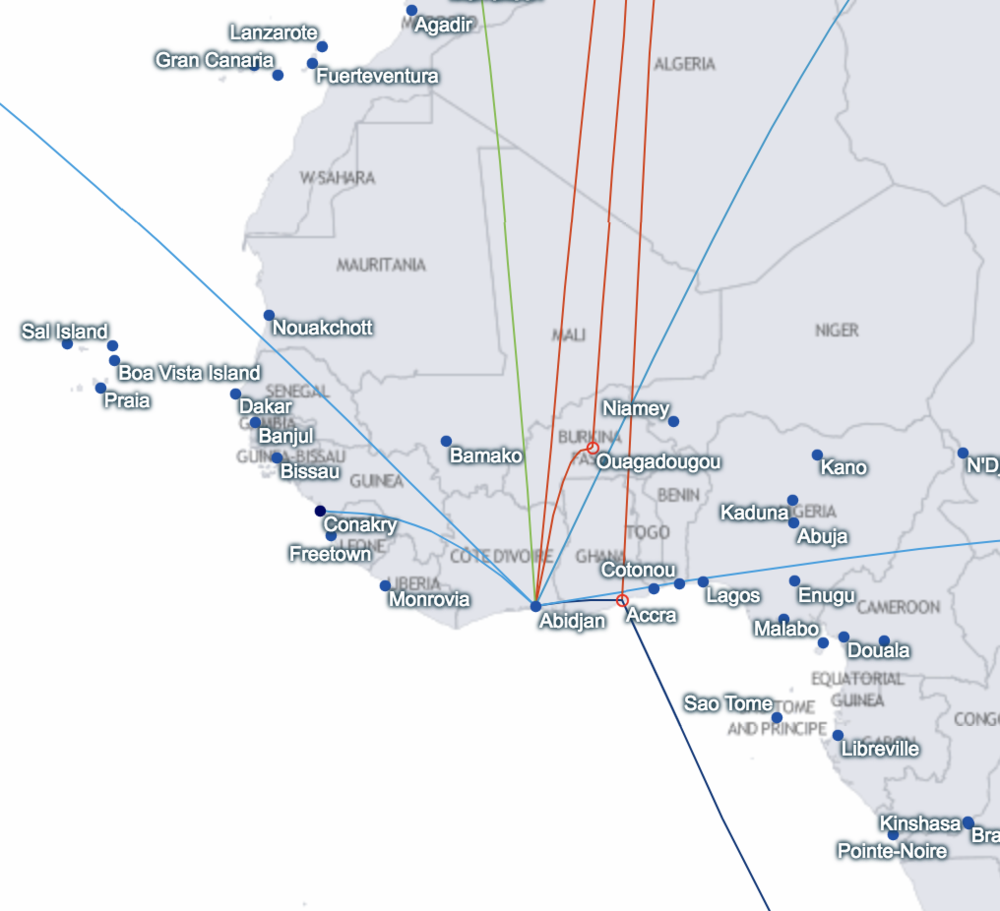
The best option, as it turned out, was one I hadn’t considered before: Accra, Ghana. Not only did the flight schedule work out perfectly for a long layover in Abidjan followed by a stopover in Accra, but upon further research, Accra actually seems like a very interesting place to visit and a fantastic place for my initial port of call in West Africa. It even has a newly-opened Marriott hotel, where I will definitely be looking to redeem points for my stay.
Sadly, the two-stop routing in Africa isn’t much of a “hopper” anymore, but there’s nothing further I can do. My revised itinerary now looks as follows, falling just within the pesky 16-segment limit:
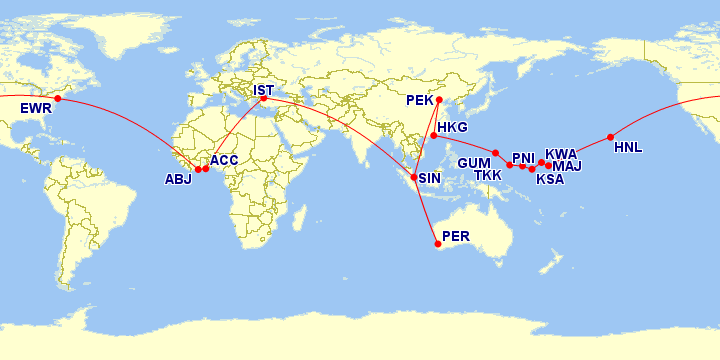
Ethiopian // EWR–ABJ // Business // 14 hr layover in Abidjan South African // ABJ–ACC // Business // 3 day stopover in Accra Turkish // ACC–IST // Business // 19 hr layover in Istanbul Turkish // IST–SIN // Business Singapore // SIN–PER // Business // 2 day stopover in Perth Singapore // PER–SIN // Business Singapore // SIN–PEK // Business // 7 day stopover in Beijing Air China // PEK–HKG // Business United // HKG–GUM // Economy // 14 hr layover in Guam United // GUM–TKK // Economy // 14 hr layover in Chuuk United // TKK–PNI // Economy // 23 hr layover in Pohnpei United // PNI–KSA // Economy United // KSA-KWA // Economy United // KWA–MAJ // Economy United // MAJ-HNL // Economy // 14 hr layover in Honolulu United // HNL–EWR // Economy
Since the origin had been changed to Newark, I was now working with a revised MPM of 18,633 miles. The outbound journey clocks in at 16,042 miles, and the return journey at 17,879 miles. I’m happy with that!
The Aeroplan call centre processed this without issue, and the taxes and fees came ultimately came to $437.40. Having eliminated all the Air Canada flights with my last-minute tweaks, I ensured that the itinerary was fully surcharge-free, and so that $437.40 consists solely of the airport taxes incurred by 16 separate takeoffs and landings across nine countries in five continents. Well worth it, if you ask me.
Conclusion
Côte d’Ivoire. Ghana. Turkey. Australia. Singapore. China. Guam. Federated States of Micronesia. Marshall Islands. Hawaii.
It hasn’t quite hit me yet that I’ve actually booked and will be going on a trip like this. I still need to do a few things, like setting up some ExpertFlyer alerts for those segments in United economy class in case business class opens up, and filling out visa applications for certain countries. But one thing’s for sure: the fact that this trip can all be booked for 160,000 Aeroplan miles is nothing but downright crazy.
It all comes down to something I routinely emphasize: understand its inner workings, and Aeroplan can be an insanely powerful program. Of course, you don’t have to take things nearly as far as I did in this trip in order to extract spectacular value out of your miles; even just by taking advantage of Aeroplan’s stopover policies, you’re already coming out ahead.
And ultimately, who knows what’ll happen to Aeroplan after June 2020? If you have a stash of Aeroplan miles, it may be time to start thinking about a few “last hurrahs” of your own.






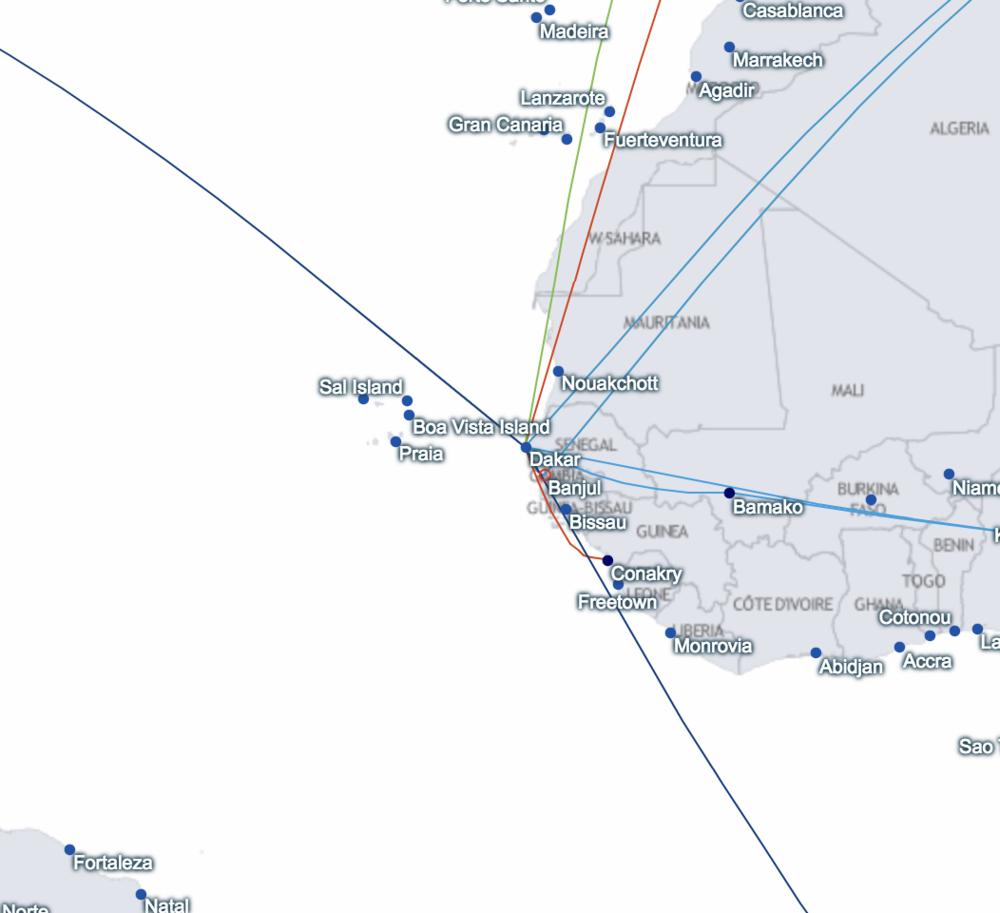
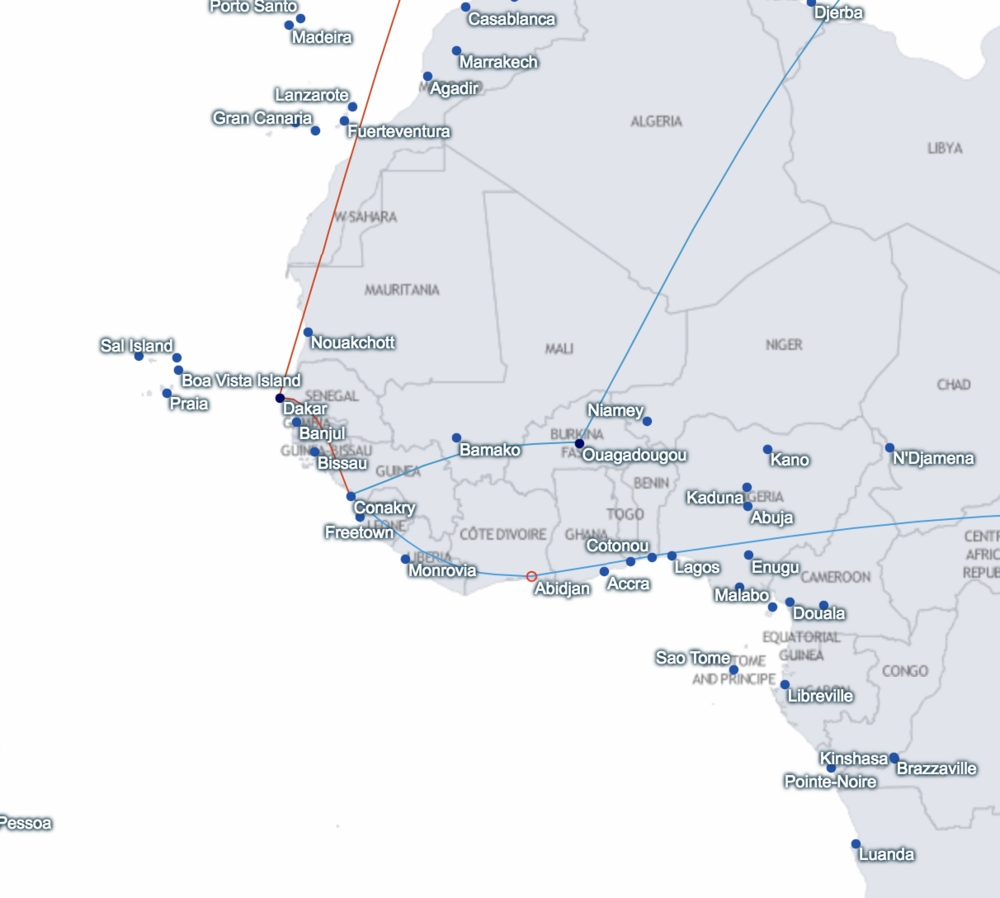
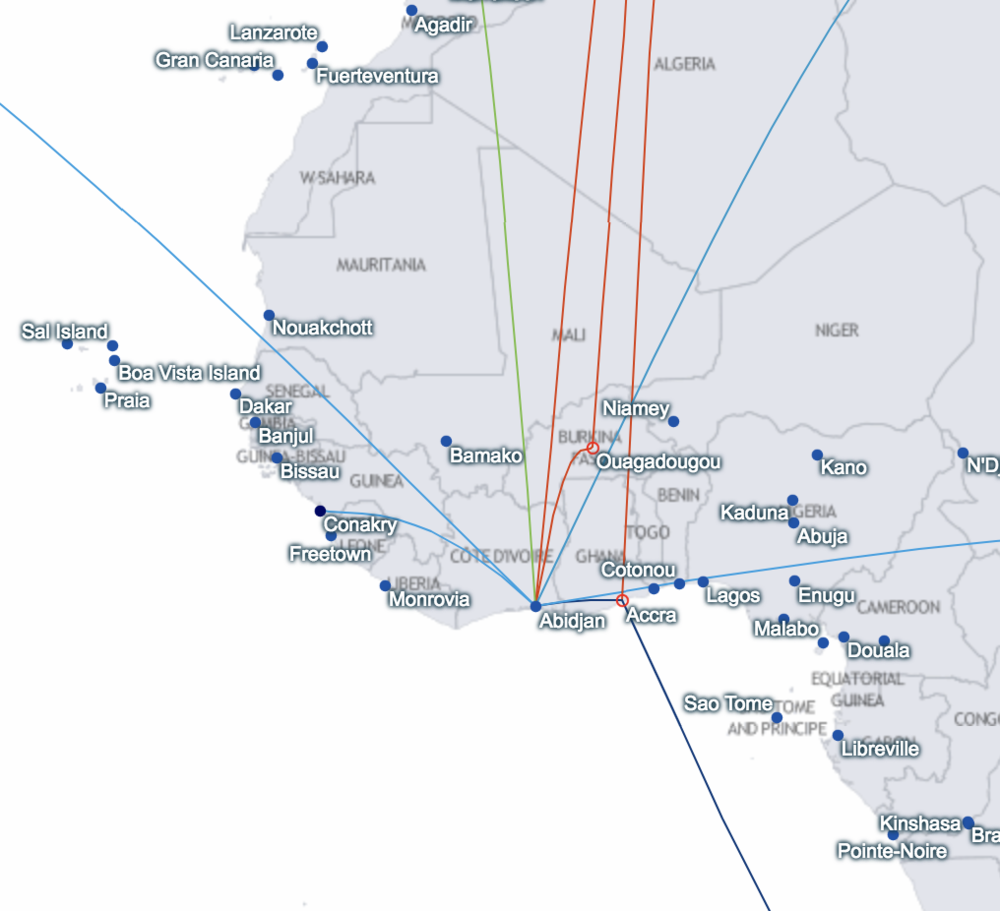
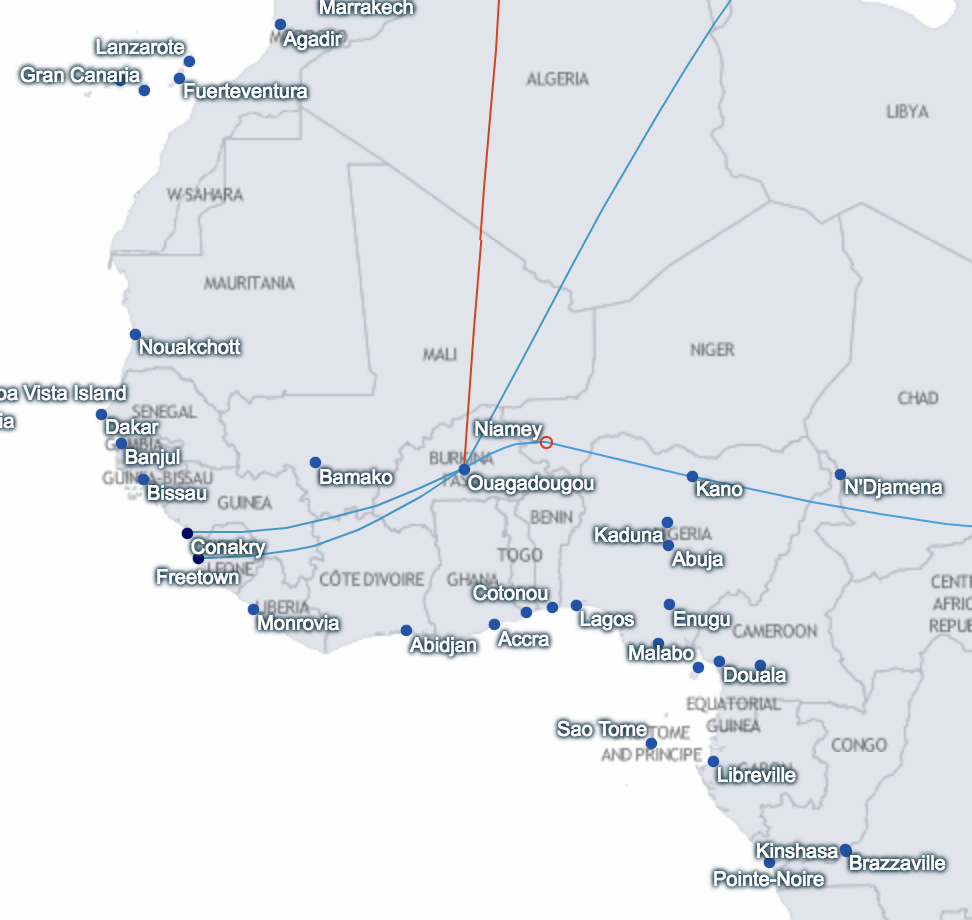
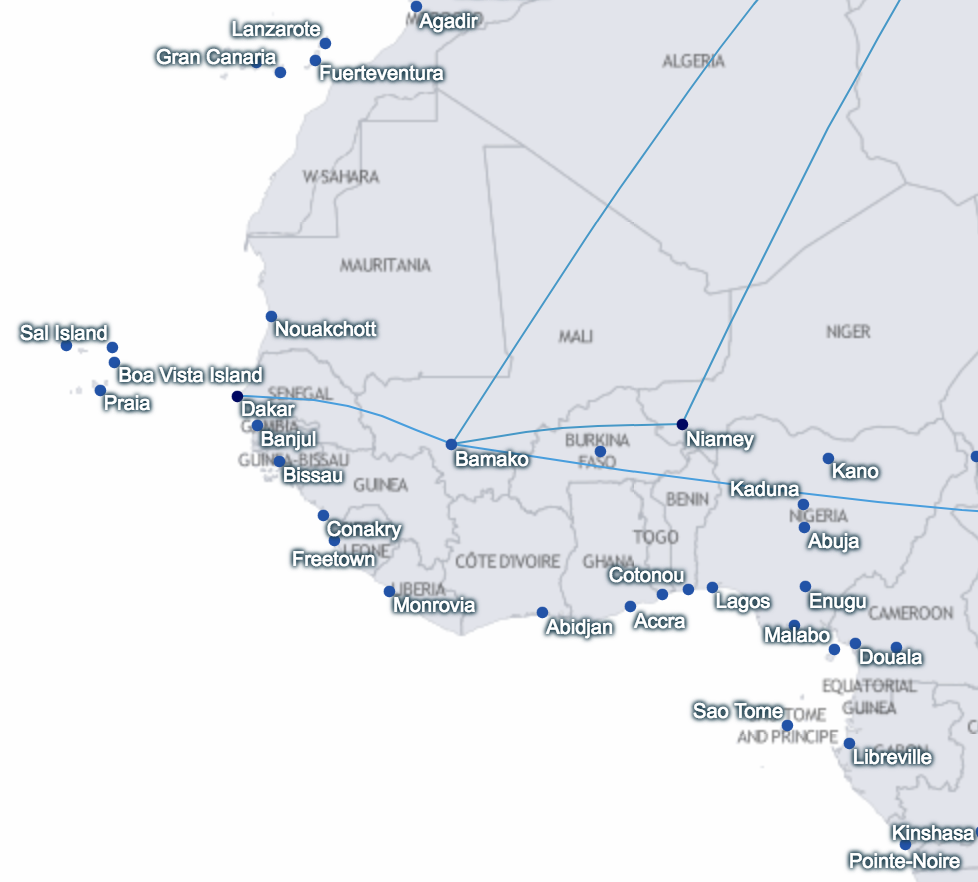
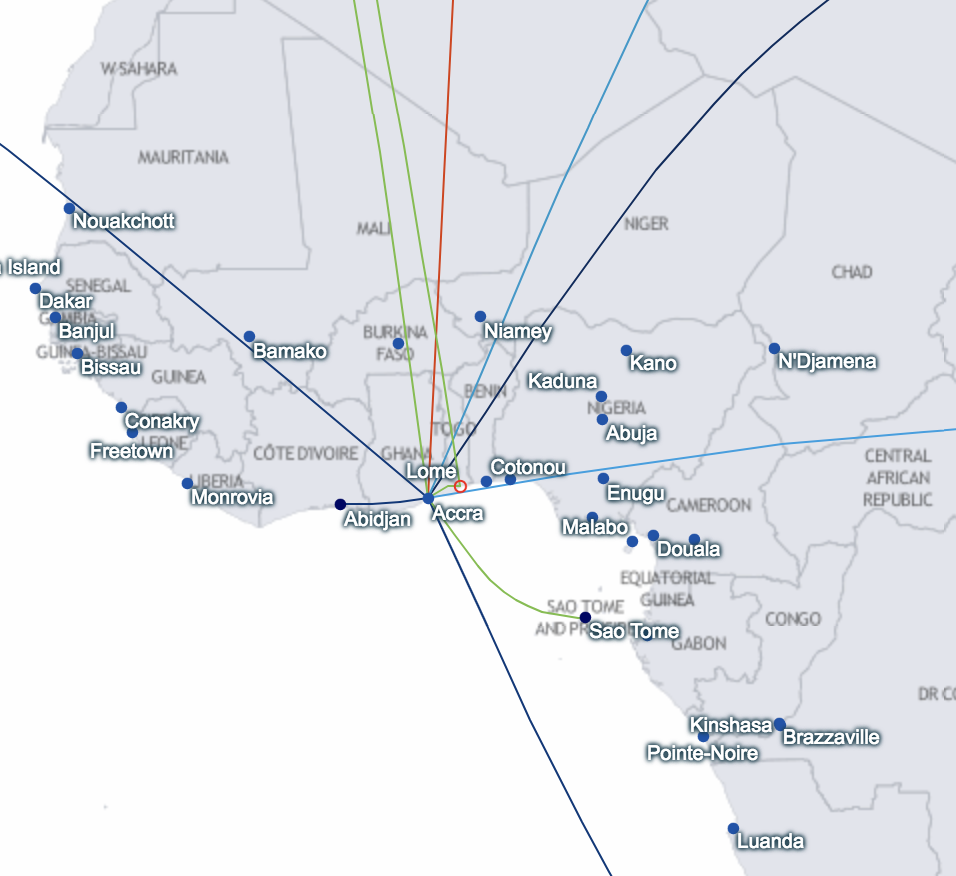














Very inspiring article! When having these many layovers, wouldn’t the airport fees add up pretty significantly? Also, at the layover airport, did you need to check yourself in again after entering the country?
Yes, the airport taxes is how the total taxes and fees on this itinerary came to $437.40. Ghana’s airport tax was especially expensive.
Nope, usually you’ll receive all 2-3 boarding passes at the start of a sequence of flights over the next 24-hour period, and you just keep using those until you need to get the next set.
Hi Ricky, I’ve been a loyal reader for more than a year now and learned so much from your post. I even got a handful of friends following you after they keep asking me how I can fly around so often on very modest earnings.
I am kind of on high alert now that the deadline for booking the mRTW is only a few days away. I want to try out the Island Hopper UA 154/155 as well as the African Hopper that you mentioned in your Craziest Aeroplan mRTW blog post.
My goals:
– East Coast to Cancun for a long Layover
– Cancun to West Coast Africa (hopping through CKY / ABJ / ACC hopefully)
– Then making my way to IST (Stopover)
– IST through Asia to WLG (Destination)
– WLG to HKG (Stopover)
– Finally HKG to wherever I started from taking advantage of the Island Hopper UA154/155 through HNL
– My MPM is roughly 14075
Could you please confirm the following for me?
– If I book a NA/SA trip before Sep 1, I can make changes to the entire itinerary with the same rules prior to Sep 1 changes but I will incur the $100 fee for each direction thus $200 + $30 calling fee
And if you have any tips/suggestions for my crazy goals please let me know. I am all ears.
Thanking you in advance,
Jay B.
Where are your stopovers apart from Beijing? Is UA155 counts as 4 segments rather than 1?
Awesome trip. I’m working on a less stop version of the same from YVR. It’ll be my third "mini-rtw" using Aeroplan. I can’t imagine they leave the program open to such redemptions anymore.
I’d never really though to try for the island hopper with this, kinda assumed there’d be no availability cuz UA availability is such garbage often times.
How far out did you book this? I’m basically look at 337 right now and while trying to find a final flight from SFO-YVR I get stuck with like a 14 hour overnight layover at SFO cuz the only option is a 0600 departure.
I booked this in June 2018, and the trip was in Jan 2018. So about seven months out. UA availability is decent in economy class, and the Island Hopper is almost always open in my experience.
Amazing- totally agree-I would rather blow my existing point balance on a Aeroplan program that I know than take a gamble with the new program!
Exhausted just looking at the no. of stops
Omg! Ricky! I might have to copy cat that trip. Hard to top the one up Im sure! Fantastic trip and thanks for sharing!
Regards,Marlene
Thanks for the inspiration. This is a crazy amazing trip!
nice itinerary. be warned about the ACC stop, Ghana requires visa that can only be obtained within 90 days, and in home country. thankfully I verified before booking
Hey Ricky, the MPM online finder linked in this article is 404ing. I know it’s easily googlable, but for continuity of your blog I’d like to let you know 😀
You are the best kind of reader! 🙂 Thanks so much.
This sounds amazing! Congrats!!! Do you know anything about stopovers in the South Pacific? I’m looking at doing something a lot simpler, like maybe MEL<->TBU with a stop in AKL, but it says that it’s not a valid itinerary. Thoughts?
I can’t check at the moment, but I remember seeing that Aeroplan actually doesn’t allow any stopovers or open-jaws if the travel is completely within one region that’s not North America (which gets one stopover or one open-jaw). Your itinerary would be completely within South Pacific. Maybe that’s it?
That looks about right! I tried doing a stopover on a purely Asia 1 itinerary, and it gave me the same error message. Must be one stopover only in North America!
Hi Ricky – do you use a spread sheet to plan such a mega trip. I am planning a similar trip for 2019 or 2020 from YYZ, with layover in Asia and Africa, my stops are;
SCL // 10 days –
open jaw – EZE – JNB
JNB // 10 days
PER // 15 days.
Question, can I do open jaw in my first stop or must be at the final destination?
Thanks
I typically use a Notes file. Technically you aren’t allowed to do that, but you might find an agent who’s able to ticket it for you. But don’t count on it – most agents will tell you that the open-jaw must be adjacent to the destination.
Wow, this post is drawing some great comments from all sorts of travellers. Many good ideas are coming out. Its almost like networking at a meeting. Keep the comments coming people. I am getting so much info, so many ideas. Thanks so much
Hi Ricky – near the end of this article you mention that you want to set "up some ExpertFlyer alerts for those segments in United economy class in case business class opens up". Would this incur any additional costs (i.e. maybe another $30 for calling into Aeroplan or maybe even some severe change fees)? or is it really just knowing that a Business class seat has opened up – and letting them know and they’ll just "correct" it accordingly for what should have been Business in the first place?
Thank you – awesome content, as usual.
Hey Jonathan,
Yes that’s exactly how it works. If you’ve booked a journey in a certain class of travel, but have some segments in a lower class, you can call in and upgrade for free if award space in your designated class of travel opens up on that exact flight later on.
Ricky
Wow, ACC – IST – Ghanna Passenger service Charge $195.30? This is one crazy trip. Last year, my wife and I did the UA154 island hopper, ewr-hnl-maj-kwa-ksa-pni-tkk-gum-mnl, then pek-ord all for US$295.36 and I credited the miles to Krisflyer 100% miles flown. By the way I paid extra for seat 7A & 7B and got to sit next the Mechanic seated on 7C for the island hopping part of the journey.
Off topic, I think your Siberian Express to China is insane. Can’t wait for your trip report though.
Yep, some of the African nations have crazy high airport taxes, which can add up on a journey like this. Your itinerary sounds like a great deal – was it one of those cheap UA fares to Asia, and then you just took advantage of the routing rules?
And funny you mention that – for me, the more insane something seems, the more insane I’d be not to try it! 🙂
Yes, I took advantage of the routing rules. I did the search on ITA Matrix and the real trick was to go to the site “bookWithMatrix” and book it through Price-line. It had then a drop-down menu if you want to book it through Mobile or Desktop site. Here I am on my desktop computer and I choose mobile site to finalized the booking and the price dropped down to $295.36 from $800+. Why the price dropped? No idea but it helped to bring down my bucket list
Siberian Express is too harsh for me but I will stick to my next bucket list "Patagonia"
Awesome! Would have loved to hear the AP agent’s reaction when you started listing all the flight segments. Did you start the conversation with, "So I’m going to Perth, Australia…….here’s the routing…"?!
Hah! When I book things like this, I usually start the call with "I’m trying to book a very complex roundtrip" and proceed to delve into the flights one-by-one.
Good luck on this crazy trip!
Out of curiosity, have you tried pricing it out to see what you get in terms of value for your points?
I have not, since I don’t think any search engine out there would be able to price it out! I’m content with "a stupidly high value" 🙂
Drink some coffee and stay awake — that’s a lot of consecutive layovers you have to do haha. Anything more than 2 layovers really tires me out — even if I’m flying in business 🙁
And the YYZ-PER for AP mini-rtw is great 🙂
Awesome! Was just planning a rtw too and curious if you can chime in on:
YYZ-LAX-ICN-SYD
SYD-SIN-FRA-YYZ
Doing crazy research too and trying to hit as much first class as possible..
Do you have any recommendations on routing to check out the best first class offerings instead of the ones above?
If your goal is to maximize First Class, you might want to route both ICN-SYD and SYD-SIN via Bangkok in order to try Thai First. Also, Lufthansa doesn’t fly First Class to Toronto, so you’ll have to connect via the US East Coast.
Settled with yyz-lax-icn-bkk-syd-yvr-yyz business as the mrs. wanted to come! Taxes and fees about cad2013 all in. I know a bit high in fees but visiting family too… thanks for the inspiration!
How long are you staying in Perth? Are you flying to other parts of Australia too?
This seems like an amazing but exhausting trip!
I especially like the island hopper and hope to use your research to build a similar hop in that area.
Two days in Perth. No trips to elsewhere in Australia.
I’ve never been to Australia or New Zealand before, and my thinking is that when I do go, I’d definitely want to bring Jessica with me. Since I’m going on this trip on my own, though, I’m okay with a quick in-and-out stay in Perth just to get a feel for it (but mainly for the MPM).
The same is true for Africa – I’d love to visit Morocco, Egypt, or South Africa, but I know Jessica would be sad if she missed out on those places. On the other hand, West Africa is a less glamorous destination that I still find intriguing, so I figured this was a good opportunity to visit.
Get in touch if you want to brainstorm about the island hopper – there’s certainly lots of fun things you can do!
Awesome itinerary!
I guess the only way around the 16 segment limit is to book a pair of one-ways, but of course, you’d lose two stopovers that way. Still, there’s gotta be someone out there crazy enough to try it!
That would be really rough – can you imagine 15 consecutive 23-hour layovers? If someone pulls it off, I’d certainly love to hear about it!
That is one impressive redemption!! This makes my YOW-YUL-ZRH-IST-BKK-SIN-PER itinerary look positively pedestrian 😉
Hey Ricky – Awesome website btw – For the last couple of weeks I have been tinkering with the almost exact same routing to unload some of my Aeroplan miles before 2020. I’ve done some, not as complex, travel with Aeroplan miles through Asia, but your definitely takes the cake.
I’ve got a question for you, from YYZ to IST, did you book online or had to call the support centre? I don’t seem to find anything stopping through West Africa, but rather going through Cairo or Germany, which is not ideal based on the hefty surcharges from AC and Lufthansa.
If you could shed some light I would tremendously appreciate it!
P.d. Are you planning on any gatherings in Toronto soon? I was actually on a crazy Aeroplan redemption last June when you gathered here in Toronto and would be interested in doing some networking, as my friends are (kinda sick) of hearing talk about miles, points, etc.
Cheers!
Juan
Hey Ricky – Awesome website btw – For the last couple of weeks I have been tinkering with the almost exact same routing to unload some of my Aeroplan miles before 2020. I’ve done some, not as complex, travel with Aeroplan miles through Asia, but your definitely takes the cake.
I’ve got a question for you, from YYZ to IST, did you book online or had to call the support centre? I don’t seem to find anything stopping through West Africa, but rather going through Cairo or Germany, which is not ideal based on the hefty surcharges from AC and Lufthansa.
If you could shed some light I would tremendously appreciate it!
P.d. Are you planning on any gatherings in Toronto soon? I was actually on a crazy Aeroplan redemption last June when you gathered here in Toronto and would be interested in doing some networking, as my friends are (kinda sick) of hearing talk about miles, points, etc.
Cheers!
Juan
You have to search segment by segment in order to construct itineraries that the search engine won’t spit out by itself. So in my case, I searched Newark to Abidjan, Abidjan to Accra, Accra to Istanbul, etc. and then called Aeroplan to book.
The process of route research is outlined in further detail in this article: https://princeoftravel.com/blog/how-to-book-an-aeroplan-minirtw
Good luck! In terms of Toronto get-togethers, there’s the upcoming PointsU Conference in September: http://pointsu.ca. Hope to see you there!